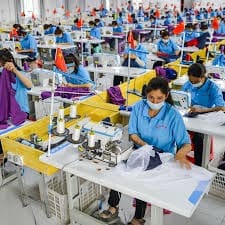Last week, I attended a half-day conference, “ESG Here to Stay: 5 Investment Themes for 2025,” hosted by IBM in their Manhattan office. The core topics ranged from how prepared the world is to power the energy transition, developments in carbon removal, financing new investments, and grappling with supply chains. Each presentation was exceptional, and the event viewed ESG from a holistic but pragmatic perspective.
The “Coming to Grips with Supply Chains” session had me on the edge of my seat as someone whose focus revolves almost solely around the supply chain and regulations. Nancy Mahon, the Chief Sustainability Officer of Estee Lauder, spoke and shared her experiences from the past year, noting that ⅔ of calls with investors touched upon supply chain-related topics. In an era of endless voluntary disclosures and increasing emissions reporting regulations arising across the globe, international companies are playing “regulatory twister.” Michelle Dunstan, the Chief Responsibility Officer of Janus Henderson, expressed the need for global harmonization in regulations and the real tangible consequences of not following these laws. Over $4 billion worth of goods have been captured at the US border since the enactment of the Uyghur Forced Labor Protection Act, with less than half being released.
This discussion illuminated the tough reality that many companies are currently navigating a regulatory maze. Between the UFLPA in the United States and the newly signed Forced Labor Act in the European Union, global trade is about to get a great deal more complicated. The EU’s Forced Labor Regulation (FLR), published on December 12, 2024, prohibits the sale and export of products made with forced labor within the EU market. This regulation, which will be fully enforced starting December 14, 2027, requires companies to ensure their supply chains are free from forced labor at all stages of production. The FLR adopts the International Labor Organization’s definition of forced labor and mandates the European Commission to issue guidelines by June 2026 to aid compliance. Unlike the US Uyghur Forced Labor Prevention Act, the FLR applies to all products regardless of origin, using a risk-based approach to assess forced labor risks.
The Uyghur Forced Labor Prevention Act (UFLPA), signed into law on December 23, 2021, aims to prevent goods made with forced labor from entering the U.S. market, specifically targeting products from the Xinjiang Uyghur Autonomous Region (XUAR) in China. Effective June 21, 2022, it establishes a rebuttable presumption that goods from XUAR or entities on the UFLPA Entity List are made with forced labor and, thus, prohibited from import unless proven otherwise. The law mandates the Forced Labor Enforcement Task Force to develop strategies for enforcement and requires importers to provide clear evidence that their supply chains are free from forced labor.
When both regulations are in effect in 2027, the corporate supply chain within which we currently work will be transformed. Between stricter forced labor regulations, trade wars, and emission reporting included in the Corporate Sustainability Responsibility Directive (CSRD), companies working within the global chain are going to be under immense pressure. They will handle providing accurate data across their operations, including product sourcing, procurement, and transactions, to name just a few. To navigate this changing regulatory landscape, solutions such as Global Trade Compliance, Multi-Enterprise Supply Chain Networks, and Supply Chain planning will be in high demand. Aside from solutions integrated within a company’s database, strategic preventative measures must also be taken to avoid forced labor being attached to the company’s operations and products.
As 2025 nears, trade between the United States and the rest of the globe could potentially change. As developments roll in, it’s best to stay aware of any potential impacts that could affect your organization or others within your value chain.
The post Navigating the Complex Landscape of ESG and Forced Labor Regulations: Insights from IBM’s Conference appeared first on Logistics Viewpoints.
